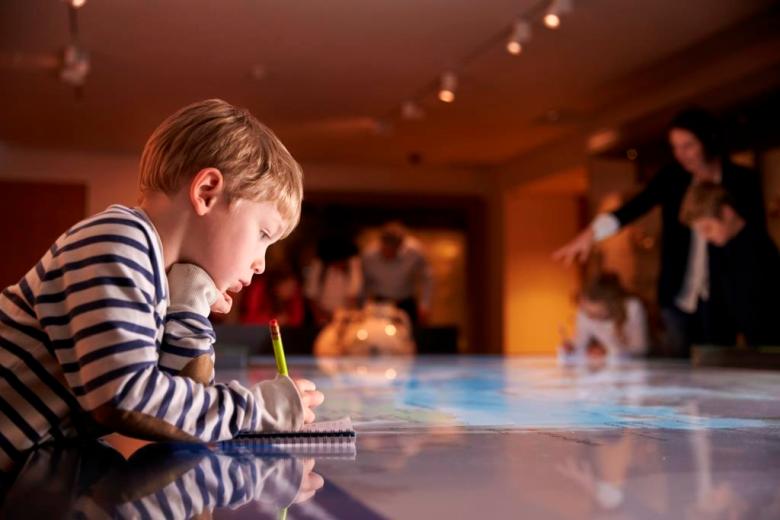
Local government has found itself responsible for Australia’s growing array of local museums and a new analysis highlights many are struggling with staffing and resourcing.
Recent developments such as the trend toward integrating museums, galleries and libraries in order to rationalise costs are “challenging the ongoing viability and local relevance” of many local museums.
That’s according to a new analysis of the provision of small and medium-sized museums in Australia, which has increasingly come under the responsibility of councils since the 1980s.

In population terms, Australia now has between two and three times as many museums than either the UK or US, but the analysis shows the distribution of national and state government funding is “heavily biased in favour of larger metropolitan institutions.”
While the Commonwealth and states typically provide one-off capital grants for local museums, councils have assumed an increasing role in their management and financing, according to the analysis by Helena Robinson from the School of Literature, Arts and Media at the University of Sydney.
She points to figures by Museums & Galleries NSW showing only 30 per cent of small to medium-sized organisations cite the State Government as a source of funding and just 4 per cent identify the Commonwealth’s Australia Council as an income source.
“By contrast, local governments in NSW directly fund more than half of the museums in the small to medium category,” according to the analysis published in the journal Local Government Studies.
Overwhelmingly it is local authorities that shoulder the burden for recurrent funding of many local museum facilities, she said.
“You see this with Create in NSW, which was the first cultural policy released by the State Government, and the subsequent Regional Cultural Fund – they seem to be funding primarily infrastructure, but there’s no specific allocation for ongoing operational costs,” Dr Robinson told Government News.
“When you build a new facility you generate an expectation that it will be a dynamic facility, with a busy calendar of events, and that requires staffing and ongoing investment, which then falls to the local authority,” she said.
This has led to councils adopting “more creative, more experimental” ways to more efficiently resource local museums out of their budgets.
Prominent among them has been the trend toward “convergence” of local museums, libraries and galleries, to maximise the use of resources and, rationalise staffing and minimise operating costs.
But the approach is, in many cases, leading to negative consequences.
Dr Robinson cites an integrated library, visitor centre, gallery and museum in south-western NSW where two specialised curatorial roles had been compressed into a single position without taking account of their unique skills or expertise.
At another institution in regional NSW, where the art gallery, local museum and a community arts centre were amalgamated in 2006, “the curator repeatedly described the difficulties in achievement adequate rigour in research of the museum’s historical collection,” she notes.
These approaches “indicate naivety on the part of local authorities in designing staffing structures that were operationally ‘efficient’ but at odds with require staff specialisation and the intensity of different types of collection work,” she argues.
The need to demonstrate “return on ratepayer investment” and deliver a busy calendar of public programs has seen many integrated facilities favour touring exhibitions, over more locally-relevant displays, because they are less time and labour intensive.
“The concern, based on the research I’ve done, is that this ultimately will undermine the meaningfulness of collections and the extent to which they’re perceived as locally relevant. Once we start to lose the rationale for maintaining these collections we might indeed see a drop in support for maintaining these collections at the local level,” Dr Robinson said.
She says governments need to strike a better balance between the provision of one-off infrastructure funding and recurrent funding, and adopt policy approaches that value museums’ ability to use their collections to produce locally-meaningful exhibitions and public programs.
Comment below to have your say on this story.
If you have a news story or tip-off, get in touch at editorial@governmentnews.com.au.
Sign up to the Government News newsletter.

After 20 years managing regional museums and libraries, I retired in total despair at the failure of local government to understand the nuances of the GLAM sector. I experienced museum convergence experiments twice; both were successful for one party only. Initially I was very supportive of convergence and set out to create services to benefit the local community as well as the wider cultural tourism sector. However, pretty soon, political and personal agendas took over and in one case, the museum was absolutely trashed (and I mean that word). Why is it that museums, which hold the most unique and irreplaceable content are perceived to be less important than libraries, galleries and contemporary arts? Not as sexy, less relevant? Few people appreciate the similarities and differences between libraries, museums, galleries and archives. All are important at different times in our lives, but museums are the HEART from which all the others grow. The Local Government Act needs to provide for these critical community organisations. While government funding is so politically contrived, the tail will always wag the dog.
Interesting and important research, complementing Victorian research published in the report Local Government & Cultural Collections in Victoria, by Museums Australia (Victoria, which provides data and discussion on issues facing local history collections and local government custodians.
What a breath of fresh air to read the research and commentary from Helena Robinson. Our small regional museum now operated within the local shire’s museum strategic plan framework heavily weighted to meet compliance with a controlling local shire authority is a perfect example. At the present a case is on the table to build a visitor centre onto our museum heritage building . The museum is housed in a turn of the century railway goods and customs store but has been added onto, several time. The building is one of only a handful of heritage buildings left in town. This will end negatively. However there is currently a debate about the convergence. The Historical society the museums founders are now having to insist we have a curator, since the shire took over the museum has not had a curator. Your paper outlined the funding situation and so it is vital the shire understand the community volunteers will be a more reliable source of sustenance as they have nurtured the collection with care and dedication whilst remaining financially viable in the past. My fear is that the local shire authority is too top heavy and will inadvertently run it into ruin .